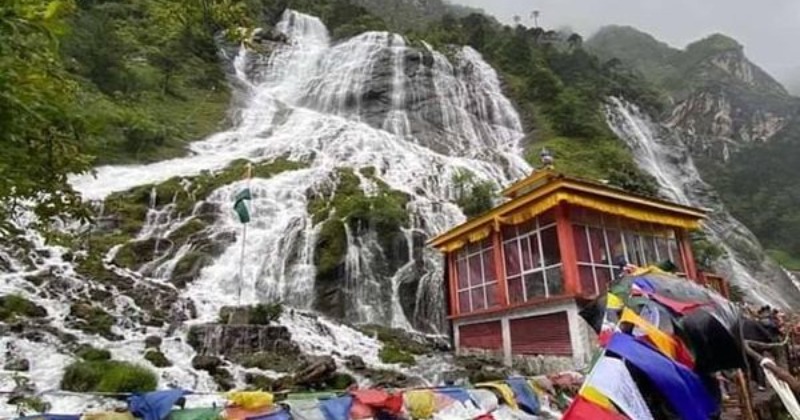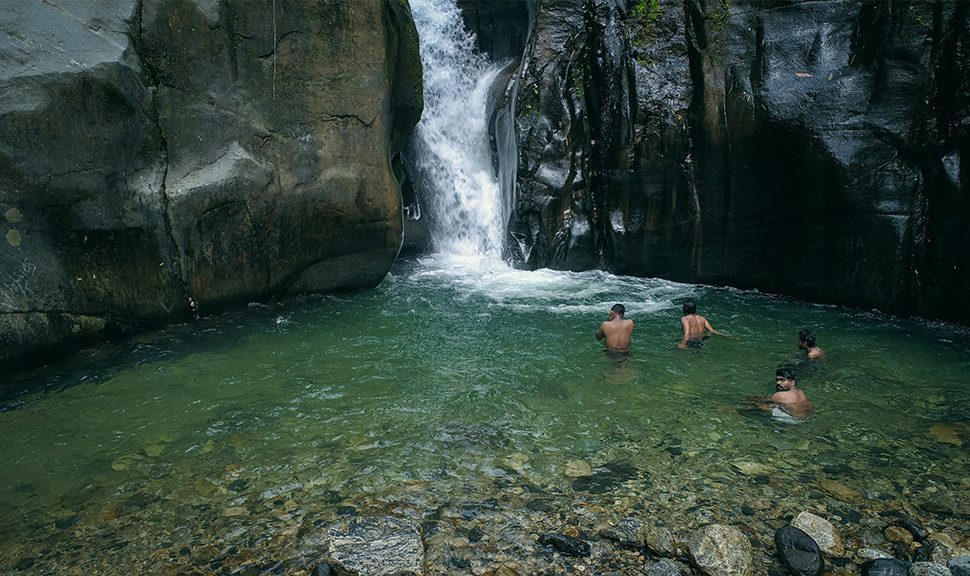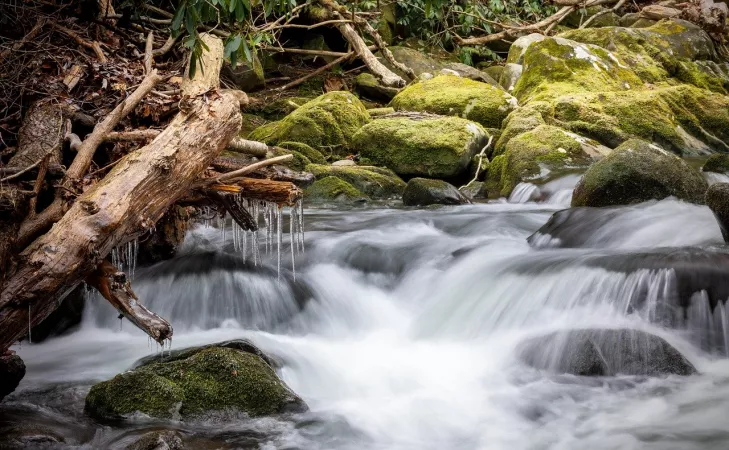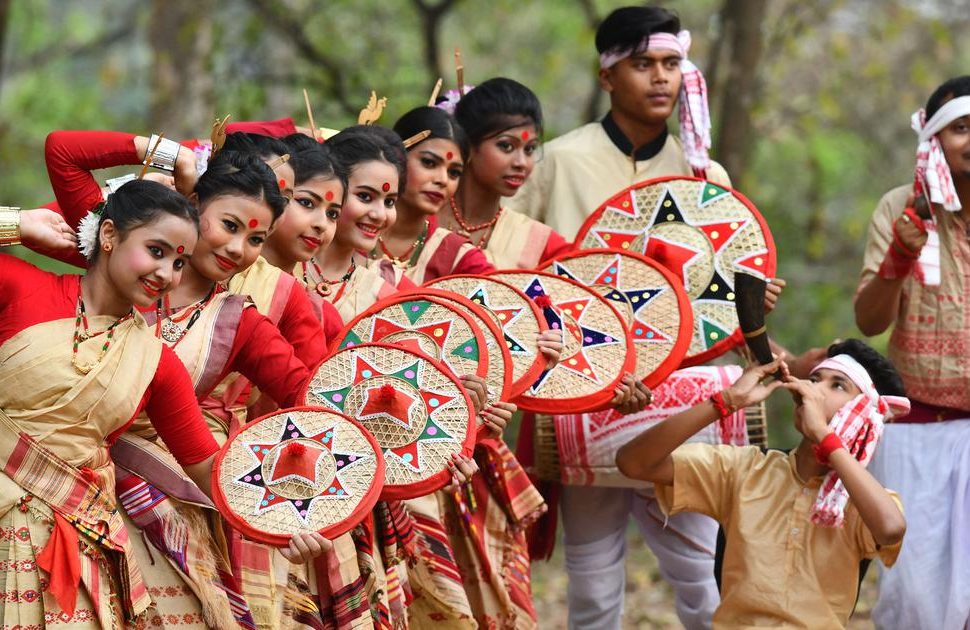Northeast India is the easternmost region of India representing both a geographic and political administrative division of the country. It comprises eight states—Arunachal Pradesh, Assam, Manipur, Meghalaya, Mizoram, Nagaland and Tripura also known as the “Seven Sisters” and the “brother” state of Sikkim.
The northeast region shares an international border of 5,182 kilometres with several neighbouring countries such as Myanmar in the east, 1,596 kilometres with Bangladesh in the south-west, 97 kilometres with Nepal in the west, and 455 kilometres with Bhutan in the north-west. It comprises an area of 262,184 square kilometres, almost 8 percent of that of India. The Siliguri Corridor connects the region to the rest of mainland India.
The states of North Eastern Region are officially recognised under the North Eastern Council constituted in the year of 1971 as the acting agency for the development of the north eastern states. Long after induction of NEC, Sikkim formed part of the North Eastern Region as the eighth state in 2002. India’s Look-East connectivity projects connect Northeast India to East Asia and ASEAN. Guwahati city in Assam is called the Gateway to the North East and is the largest metropolis in North East India.
The North-East India tourism boasts of places of beauty where nature flourishes with all its glory. Situated amidst the many hilltops and scenic valleys, the beautiful places to visit when travelling to North East paint a picture that you need to see to believe.
The picturesque views make you want to share them with someone special, and it is best enjoyed that way. The clouds floating right by your side, and the sun rising from amidst the valley, North East holds something special to experience. From the beauty of the tourist places in North East India to the fun-filled activities, there are numerous experiences that you simply cannot afford to miss out.
North East see great tourism opportunities post Covid-19. Yes, we know right now you cannot really visit the place but hey, who stops you from planning. Check out this amazing list of the serene places to visit in North East India and get ready for post Covid travel with all the necessary details.
10 Best Places To Visit across North East India
1. Kaziranga National Park in Assam
Kaziranga Gardens is one of the most famous in India. Kaziranga is a place where nature displays its pure form in millions of colors, where wild animals roam freely, where man and nature meet. This famous national park of India is located in the northeastern region of the country, in the Golaghat and Nagoan districts of the state of Assam. Let’s go back to the beginning of the 20th century, in 1904, when this beautiful wildlife reserve was established and, about 68 years later, it was considered a national park. Kaziranga Gardens is one of the most famous in India.
Kaziranga is a place where nature displays its pure form in millions of colors, where wild animals roam freely, where man and nature meet. This famous national park of India is located in the northeastern region of the country, in the Golaghat and Nagoan districts of the state of Assam. Let’s go back to the beginning of the 20th century, in 1904, when this beautiful wildlife reserve was established and, about 68 years later, it was considered a national park.
It is worth noting that it is home to two-thirds of the world’s population of the endangered Indian one-horned rhinoceros, and was also designated as a tiger reserve in 2006, home to the highest density in the world. The park is also home to a large population of elephants, wild boars and swamp deer. It was declared a forest reserve in 1908 and a wildlife reserve in 1950. Area Expansion – Covering an area of about 430 square kilometers, UNESCO declared Kaziranga as a World Heritage Site for its unique ecosystem in 1985.
Apart from this, the park has been identified as an important bird sanctuary by and Birdlife International. The city because it is home to a variety of migratory birds and residents. Located on the banks of the Brahmaputra river, the sanctuary is blessed with four different types of vegetation. 41% tall grass, 29% open forest, 11% short grass and the rest covered by water and rain. A variety of beautiful plants and animals add value to the beautiful beauty of the park.
2. Bum La Pass in Arunachal Pradesh
The Bum La Pass is a border pass between China’s Tsona County in Tibet and India’s Tawang district in Arunachal Pradesh. It is 37 km away from the town of Tawang in India’s Tawang district and 43 km from the town of Tsona Dzong in China’s Tsona County.
The road to Bum La is also a historical route, the People’s Liberation Army of China invaded India during the 1962 Sino-Indian War. Here in Bum La Pass one of the fiercest battles, the Battle of Bum La Pass, took place in the 1962 Sino-Indian War.
3. Tawang Monastary in Arunachal Pradesh
Tawang Monastery, located in Tawang city of Tawang district in the Indian state of Arunachal Pradesh, is the largest monastery in India. It is situated in the valley of the Tawang Chu, near the small town of the same name in the northwestern part of Arunachal Pradesh, in close proximity to the Chinese and Bhutanese border.
Tawang Monastery is known in Tibetan as Gaden Namgyal Lhatse, which translates to “the divine paradise of complete victory.” It was founded by Merak Lama Lodre Gyatso in 1680–1681 in accordance with the wishes of the 5th Dalai Lama, Ngawang Lobsang Gyatso. It belongs to the Gelug school of Vajrayana Buddhism and had a religious association with Drepung Monastery of Lhasa, which continued during the period of British rule.
The monastery is three stories high. It is enclosed by a 925 feet long compound wall. Within the complex there are 65 residential buildings. The library of the monastery has valuable old scriptures, mainly Kangyur and Tengyur.
The Monastery is the second biggest and oldest in Asia and is known as the Tawang Ganden Namgyal Lhatse i.e., the celestial paradise of divine site chosen by the horse was founded by Merag Lodroe Gyamtso in the year 1680-81. The Dalai Lama gave him a painting of goddess Palden Lhamo to be kept in the monastery.10-Jul-2023
4. Kamlang Wildlife Sanctuary in Arunachal Pradesh
The Kamlang Wildlife Sanctuary, established in 1989, is the 50th Tiger reserve in India. The Sanctuary is rich with floral and faunal diversity. It is situated in the Lohit District of the northeastern Indian state of Arunachal Pradesh. The park is named after the Kamlang River which flows through it. The Mishmi, Digaro Mishmi , and Miju Mishmi people tribal people who reside around the periphery of the sanctuary claim their descent from the King Rukmo of the epic Mahabharata.
They believe in a myth of an invisible god known as Suto Phenkhenynon jamalu. An important body of water in the sanctuary is the Glow Lake. Located in tropical and sub-tropical climatic zones, the sanctuary is the habitat of the four big cat species of India: tiger, leopard, clouded leopard and snow leopard.
Kamlang Tiger Reserve is rich in flora and fauna and is home to many rare and endangered plants and animals. Though small in area, the reserve houses four big cat species of India- tiger, leopard, clouded leopard, and snow leopard.
5. Nameri National Park in Assam
Nameri National Park is a national park in the foothills of the eastern Himalayas in the Sonitpur District of Assam, India, about 35 km from Tezpur. Nameri is about 9 km from Chariduar, the nearest village.
Nameri shares its northern boundary with the Pakhui Wildlife Sanctuary of Arunachal Pradesh. Together they constitute an area of over 1,000 km2 (390 sq mi), of which Nameri has a total area of 212 km2 (82 sq mi).Nameri National Park was declared as Tiger Reserve in the year 1999-2000, and is the second Tiger reserve of Assam after Manas Tiger Reserve. It has two core areas: Nameri National Park and Sonai- Rupai Wildlife (Satellite Core of the Nameri Tiger Reserve).
The river Jia-Bhoroli is the lifeline of Nameri, which flows along the southern boundary of the park from northwest to southeast. In the east, the river Bor-Dikorai is a tributary of river Jia-Bhoroli, flowing along the southern boundary from northeast to southwest.
6. Jang Falls in Arunachal Pradesh
Nuranang Falls (also known as Jang Falls & Bong Bong Falls ), 100 m high waterfall, is located 2 km northeast of the Jang town on the motorable Jang Falls Road in the Tawang district of Arunachal Pradesh state of India. Jang is 40 km southeast of Tawang, north of Sela Tunnel, and between Tawang and Bomdila on NH-13 Trans-Arunachal Highway. Jang Hydal Plant, near the base of fall, is a small hydel plant which generates electricity for local use.
The Nuranang river originates from the Northern slopes of the Sela Pass. Shortly after the waterfall it confluences with the Tawang river. Nuranang river and Nuranang falls are named after a local Monpa girl named Nura (also spelled as “Noora”) who had helped an Indian Army soldier, Rifleman Jaswant Singh Rawat, Maha Vir Chakra (posthumous) in the Battle of Nooranang during the 1962 Sino-Indian War and was later captured by the Chinese PLA forces.
Nuranang came to limelight when a song from the movie Koyla featuring Bollywood actress Madhuri Dixit, Tanhai Tanhai Tanhai was shot here and at Sangetser Lake in 1997. It was the first film shot from the state shown in a Bollywood movie.
7. Mawphanlur Lake in Meghalaya
Beautiful highlands with small ponds and houses – that’s one way to describe Mawphanlur. A night trip is recommended so that you can enjoy the starry sky and cool temperatures that follow the night. The most attractive feature of Mawphanlur is the lush green vegetation that would make a poet burst out in love. Think birds chirping, the occasional calf wandering by with a bell, and a friendly pack frolicking in the grass.
Your trip to Mawphanlur can be a busy one. Surfing facilities are available at some of the lakes, as there are plenty of boulders around where you can try out some climbing (and flipping) skills. If you are a photography enthusiast, the landscape provides a great setting for nature photography.
Travelers will enjoy the peaceful surroundings of Mawphanlur – a visit to nearby Mawthadraishan is recommended. On a clear day, one can be surprised at the endless horizon from this side. Locals will tell you that on the best morning, you can see the Himalayas and the Khasi Hills rising and beyond, the plains of Assam stretching ahead. Best time to visit – October to April is good. With better accommodation, Mawphanlur can be sold as a year-round destination as many come to see the rain-swept landscape during monsoons.
8. Nongkhnum River Island in Meghalaya
One of the largest islands in Asia, Nongkhnum is a complex that attracts those who want to be alone in nature. Along the clear and flowing waters, Nongkhnum also hosts a popular annual festival where visitors can sample local cuisine and experience the region’s love of music and entertainment. It is here that Meghalaya’s longest river, the mighty Kynshi, splits into the Phanliang and Namliang rivers.
This unique landscape design results in beautiful river beaches. Enjoy a calm boat ride in the white water or go on foot to explore the many features of the island. There is a beautiful bridge that connects the island to the nearest shore, adding to the incredible photo ops that this place offers. There are many activities that you can enjoy in Nongkhnum with the help of local guides and operators.
Winter and spring are perfect for camping: low light pollution here allows you to stay for a long time sightseeing. There are also many rare species of plants and insects in Nongkhnum Island. In addition to its unique landscape, Nongkhnum Island is surrounded by breathtaking waterfalls: Weinia Falls, Thum Falls and Langshiang Falls.
Best time to visit Nongkhnum – October to April is a good time to visit, coinciding with the best travel and activities. Road conditions are not always good as you approach Nongkhnum, so travel during monsoons can take a while and be a barrier in many areas for safety reasons. However, you can be confident in these conditions to enjoy the best and most powerful water.
9. Holy Water Falls – Chumig Gyatse in Arunachal Pradesh

The lesser-known Chumi Gyatse Falls, also known as the ‘Sacred Waterfalls’, a group of 108 waterfalls on the India-China border, offers one of the most breathtaking views in Arunachal Pradesh. Famous for its lush greenery, 400-year-old monastery, small lake and sheer beauty that can rival any European resort.
Locals believe that Guru Padmasambhava, who is often called the Tibetan-Buddhist “Second Buddha”, and a good Lama (monk) engaged in “showing power”, which gave birth to the holy water.
The bamboo plant, which the Good Lama is said to have touched while shaking his hand, is found in the Chinese-controlled area of Tibet. During the time of Guru Padmasambhava, popularly known as Guru Rinpoche, he cast his 108 rosary on a rock. 108 fountains erupted simultaneously when each pearl hit the stone.
The best time to visit this beautiful falls in from December to February, when the entire town receives heavy snow, the area transforms into a white landscape.
The Monpas (Tibetan Buddhist) tribe of the state owns the Chumi Gyatse temple on the mountain. Its very pure water provides many health benefits. The Monpas treat themselves and their families with the water of this spring as “Amrit” (nectar), believing that it is a cure for illness. Although the bottle can be filled with water, it is better not to touch the ground outside this holy place.
Also, the flowing water is not snow water, unlike all other water. Its origin lies in the mountains themselves. This water does not dry up and continues.
10. Mokokchung District in Nagaland
The Mokokchung region of Nagaland is a must visit place for visitors. It is not only rich in culture and history, but it also boasts some of the most beautiful attractions in the area. Mokokchung region has something to offer everyone, from beautiful mountains to lush green valleys. Here are the top 10 sightseeing spots in Mokokchung area that will take your breath away:
1. Mokokchung City – Mokokchung City is the administrative capital of the district. It is well known for its beautiful landscape, with its mountains and grasslands. The city also has beautiful churches and bustling markets.
2. Ungma Village – Located near Mokokchung town, Ungma Village is one of the earliest settlements in the area. It is home to the Ao Naga tribe, known for its rich heritage and centuries-old traditions.
3. Longkhum Village – Perched on a hill, Longkhum Village offers a panoramic view of the entire region. The settlement is inhabited by the Chang Naga tribe, known for their friendliness and hospitality.
4. Longleng Town – Longleng Town is located in the eastern part of the district. It is home to the Phom Naga tribe and is known for its beautiful scenery. 5. Tuensang District – Tuensang District is located in the southern part of Tuensang District. It is known for its long cultural history and beautiful mountain scenery.
6. Mon District – Mon District is located in the western part of the province. It is known for its many natural resources and beautiful mountains.
7. Japfu Peak – Japfu Peak is the highest point in the region and offers a spectacular view of the entire region.
8. Doyang River – Doyang River is the longest river in the region and a popular spot for boating and fishing.
9. Longleng Village – Longleng Village is located in the south of the region and is known for its beauty.
10. Kiphire Region – Kiphire Region is the eastern region in the region, known for its rich culture and untouched beauty. These are some of the best tourist attractions in Mokokchung region.
The Mokokchung area is a great choice for anyone looking for a cultural experience or enjoying the natural beauty of the area.
We provide cars for hire to all destinations across northeast for tour and sightseeing purpose. Get in touch to book your Shillong and Meghalaya tourist cab with us and pay later. You can hire a car online or call us to get your preferred cab for pickup. travel the northeast of India with our cars.






